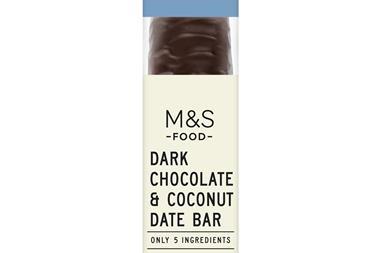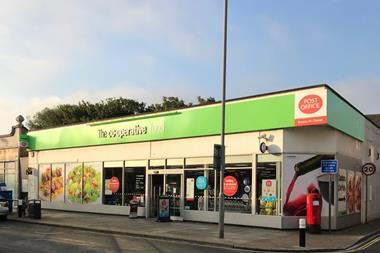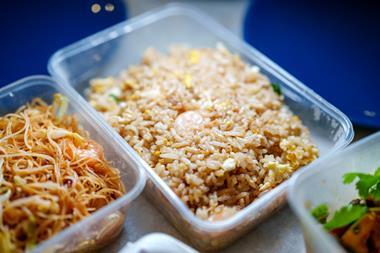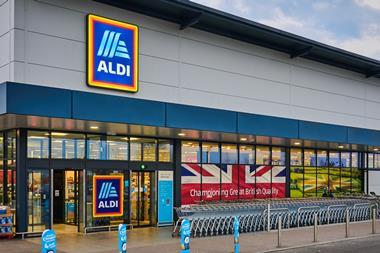Weeks after putting its 2012 salt reduction targets on ice - in an apparent acknowledgement that certain technical difficulties were proving insurmountable - the government stunned the industry last week, lowering by 25% the threshold for a dreaded red traffic light.
The imposition of a 1.8g per portion limit, down from the previous FSA guidance of 2.4g, will have serious repercussions for retailers and brand owners wishing to take part in the latest DH plans for a new front-of-pack nutrition labelling scheme.
So is it a feasible target? Which categories will most likely be hit? And there still options on the table for suppliers and retailers eager to slash salt without compromising taste, or has the industry hit a ceiling?
With only about 40% of the salt targets set under the Responsibility Deal achieved by the 2012 deadline, progress has unquestionably been slower than the DH would like. And while salt is often portrayed as a cheap flavour enhancer in processed foods, operators even at the premium end of the market admitted to struggling: Waitrose reported technical difficulties in categories such as uncured meat and bacon and sandwich chain Eat highlighted cheese as being problematic.
So the government’s decision to go for a lower red light threshold has angered many in the industry.
Salt reduction tech
Soda-Lo: A new ingredient sold by Tate & Lyle that has picked up awards. Its hollow centre maximises surface area relative to volume.
Water-oil-water emulsions: Salt is only contained in one of the aqueous phases, increasing the perception of saltiness.
Sensory contrast technology: Holland’s TNO has patented a technology that enhances saltiness by spreading salt unevenly in bakery products.
Potassium-based alternatives: Potassium salts work in a wide range of applications.
“We’re disappointed by the lack of consultation on this,” says one leading supplier. “As a business, we’ve worked very hard towards government targets on salt but this could prove to be a step too far.”
Over-ambitious targets could not only damage sales, but prove counterproductive, the supplier adds, with consumers staring to add more salt to their food if manufacturers are pushed to reduce salt to the point where their products become bland.
Even health campaigners such as Consensus Action on Salt & Health (CASH) accept the industry has made significant progress already.
”Tesco and Morrisons have gone a really long way,” says CASH campaign director Katherine Jenner. “Just by reducing salt and letting people get used to it, the industry has cut a lot of salt out of our diet. Kellogg’s Corn Flakes tastes like a different product today from how it tasted even 10 years ago.”
Technical options
To make greater strides, however, will almost certainly require new technological solutions, industry experts warn.
“Gradual reductions in salt levels have achieved considerable results. However, new technical solutions are required to meet some of the 2012 targets,” says Barbara Gallani, the Food and Drink Federation’s director of food safety, science and health.
Leatherhead Food Research’s head of food innovation Dr Wayne Morley agrees. “We’re getting close to the limit of what can be easily achieved. Technical solutions will become more relevant.”
Some food companies have already embraced technology. By grinding salt down and spraying it onto crisps, Walkers managed to slash salt levels by 25%-30% several years ago, without affecting taste. Hula Hoops has also reduced salt levels by using a potassium alternative.
A metallic taste can make potassium unsuitable for some applications, but for others such as crumpets and cakes, it is a straightforward solution.
Potassium-based solutions do have some health drawbacks. The Department of Health advises against their use because of potential health risks for people with kidney problems.
However, DH officials have been in discussions with producers and it will likely soften its stance, especially given a lot of people are deficient in potassium.
Perhaps the most exciting new technical solution coming onto the market is Soda-Lo, which was developed by UK start-up Eminate and launched globally by Tate & Lyle in November.
The ingredient has a hollow centre, so you get the same saltiness with less salt. “It is a hugely significant launch and one that is likely to emerge as a major salt reduction option this year,” says Morley.
Soda-Lo has great potential for a range of products from crisps to cheese but it is not suitable for wet applications such as sauces and soups. And given the sheer variety and diversity of products using salt, the industry will have to pick and mix from a range of solutions.
“There is no one great substitute that will work across the board,” says one supplier. The lack of a one-size-fits-all solution will make life especially difficult for makers of ready meals.
“The likelihood is they will have to reduce salt from a number of ingredients. If you have to take a bit from four different ingredients that makes for four times the work. You have to deal with each one separately and check the balance has been maintained,” says Morley.
Costly alternatives
There are also cost implications. Salt is a cheap, basic commodity, whereas salt replacement technologies can be costly.
“Some technologies are very funky but they are more expensive. It is a big deal for small companies,” says Jenner.
Despite the barriers, there is unlikely to be any let-up in pressure from government for the industry to do more to cut salt. Only this week, scientists at the Harvard School of Public Health in Boston published a study estimating that 15% of heart disease deaths are down to salt. The health case remains as compelling as the solution is complex.



















No comments yet